Table of Contents
1. Our ZCLTM Hall Effect IC Enables A Compact BLDC Design Never Thought Possible Before!
A wide variety of rotor design methods have been proposed for BLDC motors (brushless DC motors) to reduce torque fluctuations and to lower the amount of rare metals required. However, the placement of magnets inside the rotor has made it difficult for Hall effect ICs to directly detect the magnetic flux of the rotor, or made it necessary to install them at an angle.
The ZCLTM Hall effect IC developed by ABLIC enables detection of the point where the magnetic poles are switched establishing a positional relationship between the rotor and the Hall effect IC, something that was previously thought to be impossible to achieve.
2. IPM Motors No Longer Require Any Sensor Magnets!?
In IPM motors (BLDC motors with an IPM rotor), the rotor is mostly composed of a soft magnetic material, and magnets are used only in a small part of the rotor.
Thus, even if a Hall effect IC is installed in the same way as in an ordinary SPM motor (BLDC motor with an SPM rotor), the magnetic flux density of the Hall effect IC will fluctuate, causing a large angle delay in the bipolar Hall effect latch IC. A common countermeasure is to mount a sensor magnet on the rotating shaft in addition to those on the rotor to enable the Hall effect IC to accurately detect rotation.
However, mounting a sensor magnet increases the length of the motor shaft and the number of parts.
The ZCLTM Hall effect IC developed by ABLIC for BLDC motors can output a signal with little angle delay, regardless of the structure it is placed in, even at the indicated magnetic flux densities.
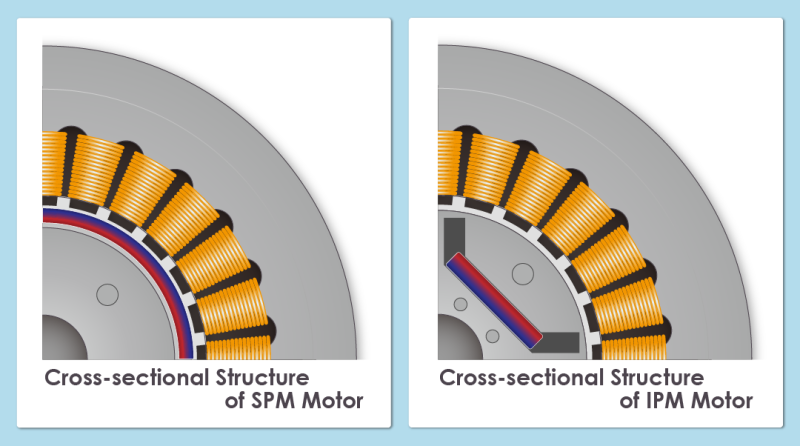
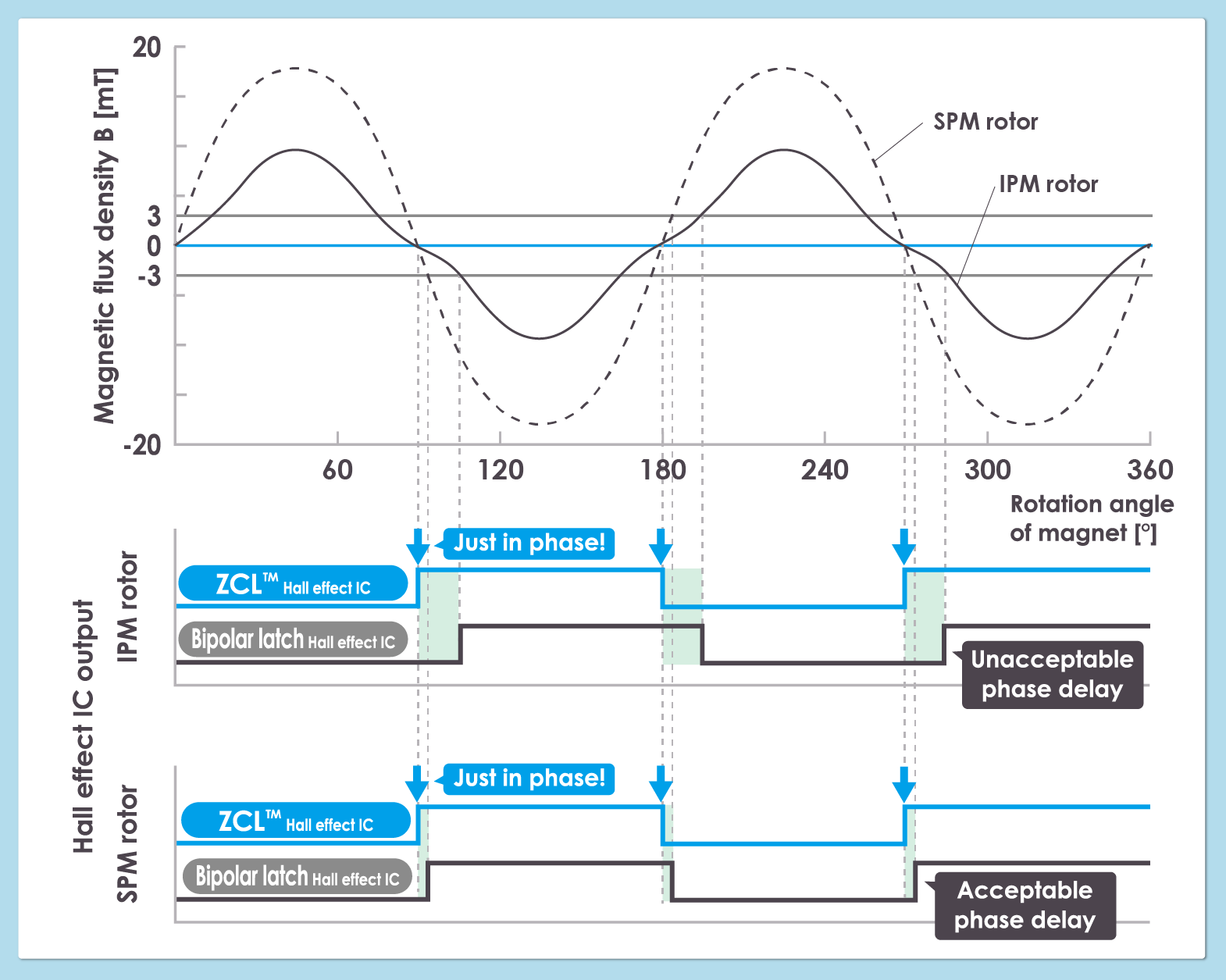
3. It Is Time to Outgrow through-Hole Packages! Stable Operation Even When Operated During Leakage Flux
BLDC motors with internal rotors often used in drive applications are installed so that the magnets generate magnetic flux towards the stator coils on the side.
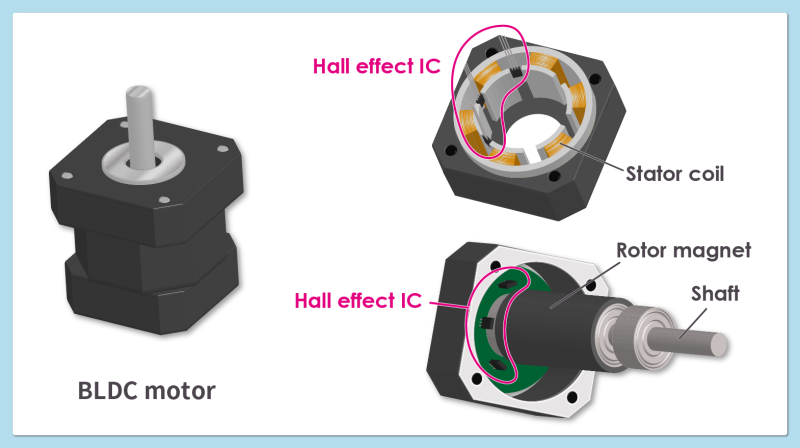
In such structures, it has been common to install Hall effect ICs in through-hole packages so that they can receive rotor magnetic flux vertically.
The ZCLTM Hall effect ICs that ABLIC has developed for BLDC motors can output signals at the correct angle even when magnetic flux density is leaking from the end of the rotor.
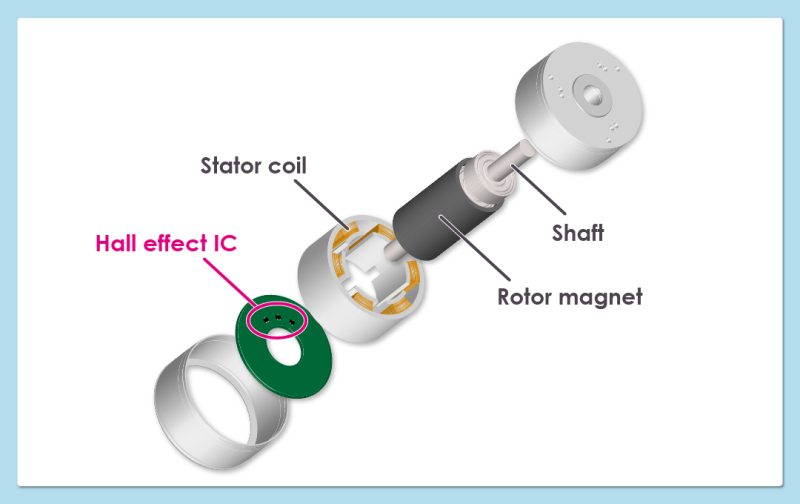
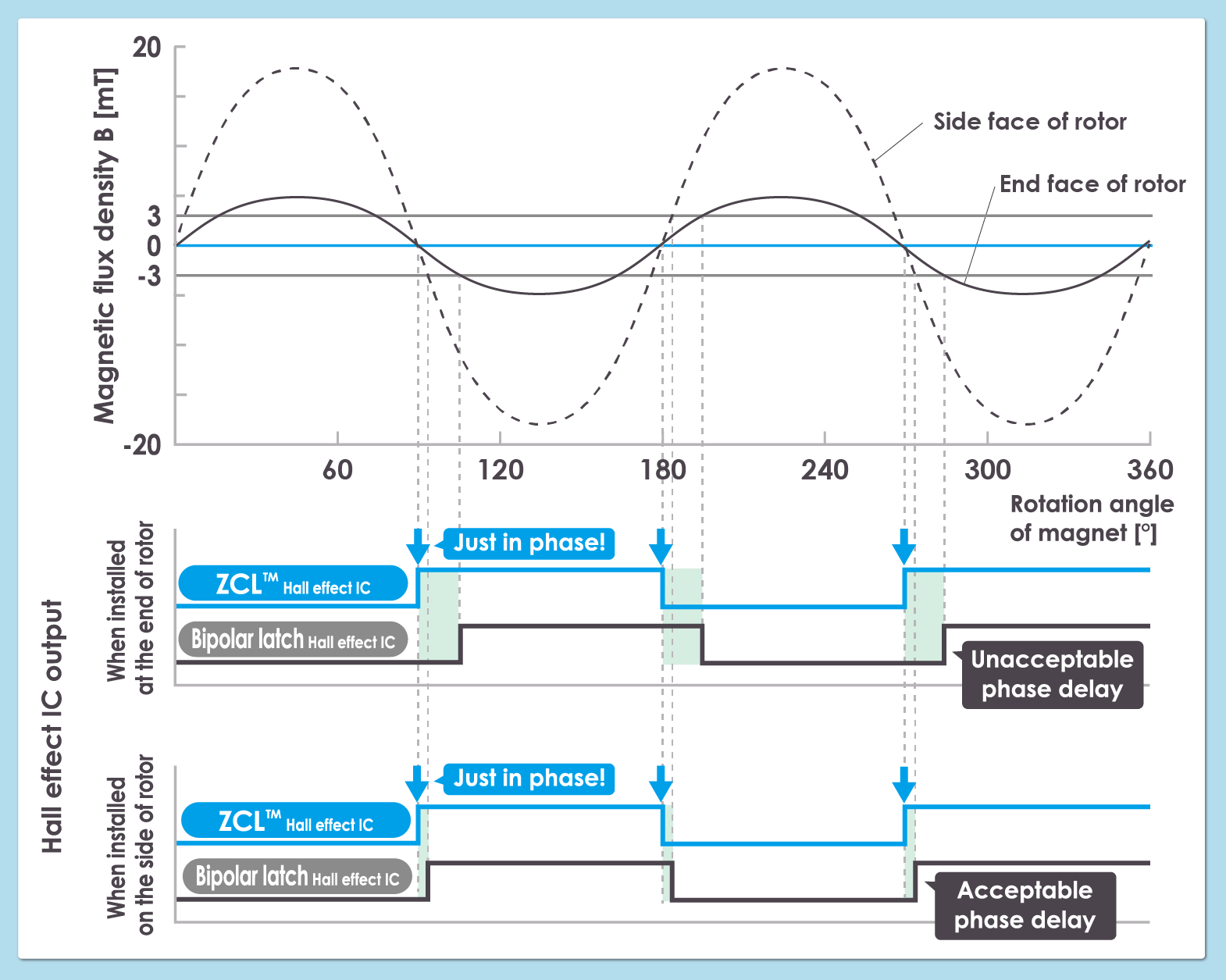
These new ZCLTM Hall effect ICs enable the design of motors so far thought impossible to build.
ABLIC offers ZCLTM Hall effect ICs for automotive use, general use, industrial use and use in harsh environments.
Customers also have a choice of two different packages to accommodate different thickness requirements and lead configurations.